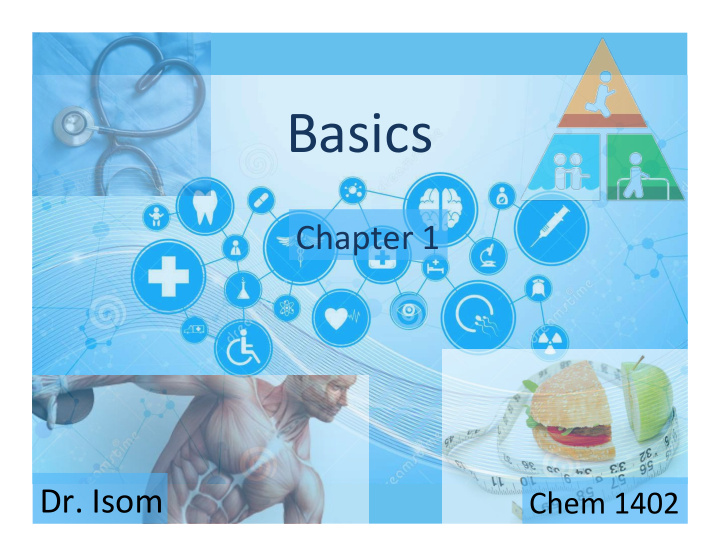



Basics ¡ Chapter ¡1 ¡ Dr. ¡Isom ¡ Chem ¡1402 ¡
Looking ahead (to be completed before next lecture) Chapter 1 problems: 3, 5-7, 38, 44, 46-47, 51-56 Read: Chapter 1.7-1.8, 1.12, 1.14, 6.1-6.2
States of Matter gas liquid solid Atoms close Flowable Atoms far apart Fixed volume Changes shape Compressible High IF “ stickiness ” Some IF “ stickiness ” Low IF “ stickiness ” Low kinetic energy Medium kinetic energy High kinetic energy
States of Matter How much do molecules in a sample like each other? Boiling point: Temperature at which a liquid turns to gas Melting point: Temperature at which a solid turns to liquid gas Temperature Boiling Point liquid Melting Point solid
gas Temperature Boiling Point liquid Melting Point solid
Types of Changes Physical Change: A change that doesn ’ t affect chemical makeup of a substance Chemical Change: A change in the chemical composition of a substance P C C P
P C P C
Types of Matter
Homogeneous Mixtures Metal Alloys Bullet Lighter Fluid
Heterogeneous Mixtures
Healthy Booze??? Tannins are antioxidant molecules found in grape skin and seeds Called Oligomeric Proanthocyanidins or OPC ’ s - Help repair collagen and elastin - Maintain blood vessels - Prevent wrinkles -20X more powerful than Vit C and 50X than Vit E -Decrease histamine production
Allergies and Antihistamines The substances that cause an allergic reaction are called allergens or antigens They bind to white blood cells called B-lymphocytes B-cells make Antibodies (Ab) against the allergen The Ab bind to mast cells and become receptors for the allergens Next time the allergen enters the body, they bind to the Ab bound to the mast cell and cause histamine to be released.
Histamine Mast Cell with histamine granules
OPC ’ s Cont. Fight smoke, alcohol, chemical damage ~~ Free Radicals Internal sunscreen Cross blood-brain barrier Explains French paradox
Rohypnol
Aspirin X COX enzyme protein responsible for inflammation helps with blood clotting makes stomach lining
Recommend
More recommend